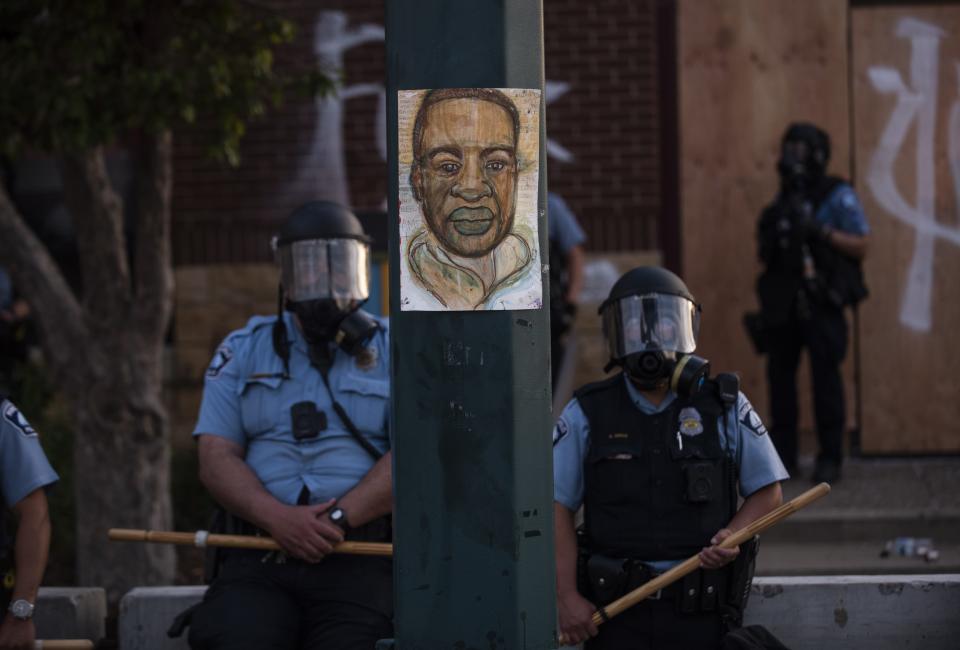How should you respond if you see police violence? Training session seeks to ease doubts.
As the live online session got underway, participants were read the names of some of those whose deaths had brought them here: George Floyd. Breonna Taylor. Tyre Nichols. Walter Scott.
All had been killed by police. All were Black. In the cases of Floyd and Scott, it was footage collected by bystanders that had helped make the case against the officers.
“This is something that’s been going on for generations,” said Tansy McNulty, founder and CEO of 1 Million Madly Motivated Moms, or 1M4, an organization working to eliminate police brutality. “We want to end it.”
The session was the first of what anti-hate organization Right To Be plans to make an ongoing monthly series in partnership with 1 Million Madly Motivated Moms. Called "Bystander Intervention: How to Safely Intervene and Respond in the Face of Anti-Black Police-Sponsored Violence, it aims to prepare participants to safely respond or even intervene in the face of police violence and harassment, especially in cases against Black people communities.
Black Americans are more than twice as likely to be killed by police as white Americans, and, according to the American Civil Liberties Union, 3.73 times likelier than whites to be arrested on marijuana-related charges despite similar rates of usage.
“These statistics make me angry but I’m here to do something,” one woman wrote in the group chat.

How did the training evolve?
Jorge Arteaga, vice president of Right To Be, said it was the 2020 police killings of Floyd in Minneapolis and Taylor in Louisville, Kentucky, that had planted the seed for the training.
At the time, anti-Asian hate incidents had been spreading along with the pandemic, and the New York City-based group had developed a program intended to help bystanders respond effectively during or after incidents of hate or harassment.
Organizers surmised that the program, structured around what Right To Be calls “the five D’s of bystander intervention” – distract, delegate, document, delay and direct – could be tailored to police mistreatment of Black people. Initial feedback was positive, with a bit of pushback.
“They said, ‘this is great – but what if you’re a Black or Brown person in the community watching another Black or Brown person be harassed?’” Arteaga said. “Some of these strategies wouldn’t work."
That's a valid point, said Suzanne Adely, president of the National Lawyers Guild.
"Anybody in proximity to police violence is also a potential target," she said, "which is especially dangerous for Black, Indigenous, and other people of color."
In response to the feedback, Right to Be focused its police brutality sessions on three "D" strategies: Document (the incident), delegate (solicit help) and delay (assist the harmed person afterward).
Right to Be's next session is set for March 28.
The importance of documentation
About 75 people attended last month’s initial webinar from throughout the U.S. and Canada.
Documenting is especially important, Arteaga said. While the presence of bystanders to George Floyd’s murder didn’t stop the killing, he noted, witnesses' video not only sealed the legal case against Officer Derek Chauvin but served to sway public opinion.
“In looking at communities where these things happen, people often don’t feel confident about stepping in,” Arteaga said. “They’re intimidated by law enforcement, and sometimes in an effort to help they can make things worse by not knowing their rights.”
Rights when recording
Among the questions at the initial training: What kind of incidents should one record?
“If someone’s pulled over by police and there’s heightened emotions, record,” McNulty said.
"Police officers do not have privacy rights while they are doing their work," said Bernardo Rafael Cruz, attorney for the ACLU's Texas chapter. "We have a lot of reports of police saying, 'You can't record me.' But they are a public agent of the government."
Generally speaking, officers can’t confiscate a phone or demand to view photos or videos without a warrant, even during an arrest.

A password can be a solid way to defend against officers looking through a phone, as the Fourth Amendment protects against an officer forcing someone to unlock a phone in most places, Adely said.
While laws may vary from state to state regarding audio footage or the distance that one must remain away from officers during an incident, “people don’t realize that if you’re in public, as long as you’re not obstructing justice, you can record it all,” Arteaga said.
However, Adely cautioned that one should be judicious in sharing such footage, citing the unintended consequences of people who post videos to social media. Show the footage to an attorney, she said.
What other strategies are useful?
Arteaga said one can also rely on the two other approaches: delegating and delaying. For instance, ask a person being harmed whether there's someone they need to contact by phone. Or approach nearby business owners for footage that can be shared with attorneys.
“People have this idea that we have to delegate our power to political officials and law enforcement, and this is one way to restore folks’ power, the sense that we can actually take care of each other with these tools,” Arteaga said.
Dig Deeper:
Congress: Black lawmakers want Biden to push for police reform during State of the Union
What to know about 'SkyCop': A camera mounted on a light pole took video of police beating Tyre Nichols.
Advertising to combat hate: A new ad campaign wants to teach people how to stand up to hate and harassment
This article originally appeared on USA TODAY: Police brutality: Anti-hate group hopes to spur bystanders into action

